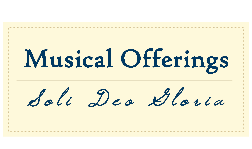Publication Date
3-28-2017
Document Type
Article
Keywords
Harpsichord, lute, Baroque, French Baroque, music composition, music Idioms, style brisé, lautenwerk, humanism, D'Anglebert, Couperin, Froberger, Perrine, Gaultier
Abstract
The close relationship between the harpsichord and lute traditions is commonly claimed but rarely elaborated upon, and many experts disagree on the manner in and extent to which the two are related. Often, texts covering the early harpsichord literature will limit discussion of the lute’s influence to a brief mention of the style brisé, if the important connection between the two traditions is even mentioned all. The lute’s impact on the harpsichordists of the seventeenth century is not a facet that can be ignored; rather, an understanding of the lute tradition is essential to an understanding of the harpsichord tradition. Neither can the relationship be isolated to the style brisé, as the influence extends also to other textures, rhythms, harmonic devices, sonorous effects, and genres found within the solo literatures of both the lute and harpsichord. This connection is especially evident in the solo harpsichord works of Francois Couperin, D’Anglebert, Froberger, and Chambonnieres. Ornamentation and broken textures, elements that were evocative of the lute, were incorporated into the already existing keyboard tradition represented by the organ. However, although composers for the harpsichord imitated the style of lutenists such as Gaultier and Pinel, they also transformed it; they developed these lute-like elements in a manner that became distinctly idiomatic to the harpsichord. In this way, the harpsichord idiom that emerged in the seventeenth century was formed by a unique blend of the organ and lute styles.
Volume
8
Issue
1
Article Number
3
DOI
10.15385/jmo.2017.8.1.3
Recommended Citation
Rutt, Audrey S.
(2017)
"A Blend of Traditions: The Lute’s Influence on Seventeenth-Century Harpsichord Repertoire,"
Musical Offerings: Vol. 8:
No.
1, Article 3.
DOI: 10.15385/jmo.2017.8.1.3
Available at:
https://digitalcommons.cedarville.edu/musicalofferings/vol8/iss1/3
Creative Commons License

This work is licensed under a Creative Commons Attribution-Noncommercial-No Derivative Works 4.0 License.
Disclaimer
The CedarCommons repository provides a publication platform for fully open access journals, which means that all articles are available on the Internet to all users immediately upon publication. However, the opinions and sentiments expressed by the authors of articles published in our journals do not necessarily indicate the endorsement or reflect the views of Digital Services, the Centennial Library, or Cedarville University and its employees. The authors are solely responsible for the content of their work. Please address questions to the Digital Services staff.
Copyright
© 2017 Audrey Rutt. All rights reserved.
Included in
Fine Arts Commons, Musicology Commons, Music Performance Commons, Music Practice Commons, Music Theory Commons

